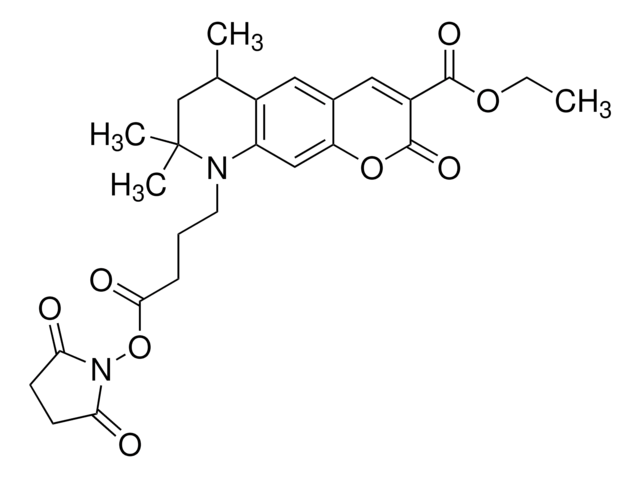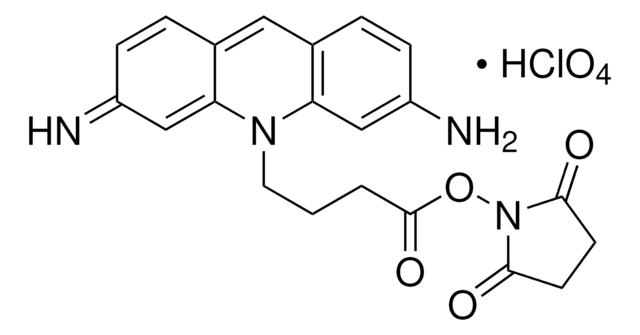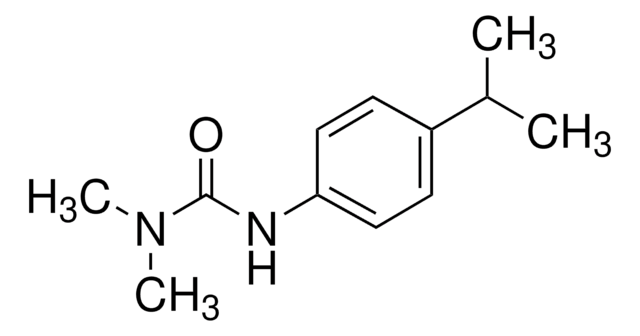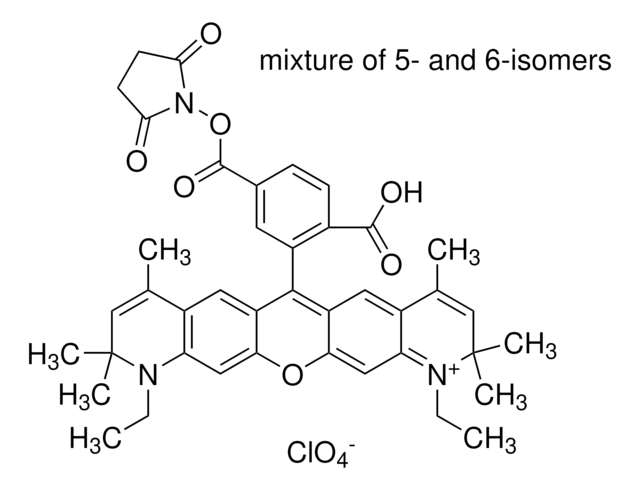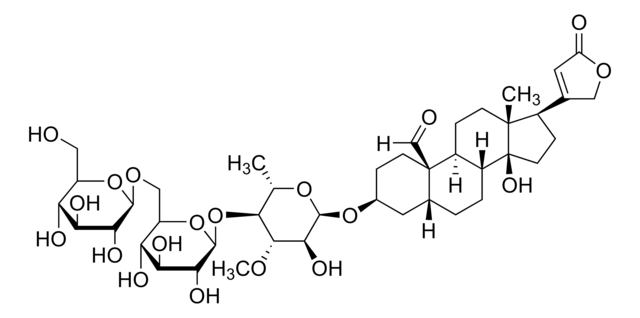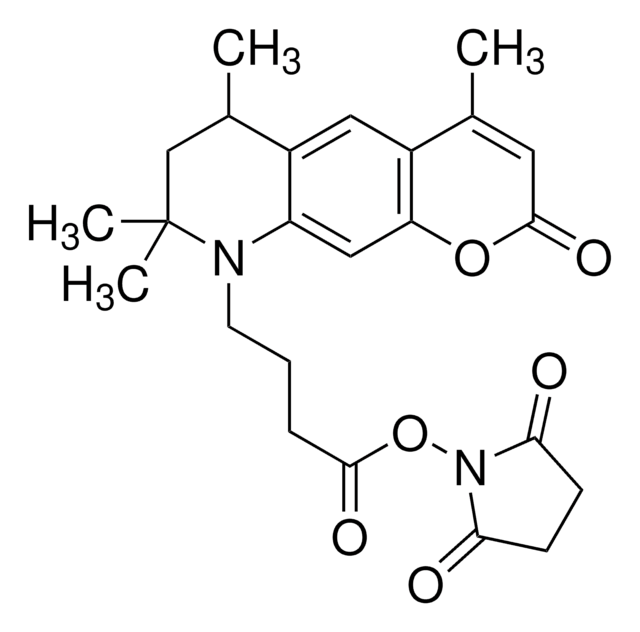56759
Atto 425
BioReagent, suitable for fluorescence
About This Item
Productos recomendados
product line
BioReagent
Quality Level
assay
≥90% (HPLC)
form
(Report result)
manufacturer/tradename
ATTO-TEC GmbH
transmittance
254 nm, >90%
425 nm, >90%
fluorescence
λex 440 nm; λem 484 nm
λ
in PBS, pH 7.4
in ethanol (with 0.1% trifluoroacetic acid)
UV absorption
λ: 423-429 nm Amax
suitability
suitable for fluorescence
shipped in
wet ice
storage temp.
−20°C
SMILES string
CCOC(=O)C1=Cc2cc3C(C)CC(C)(C)N(CCCC(O)=O)c3cc2OC1=O
InChI
1S/C22H27NO6/c1-5-28-20(26)16-10-14-9-15-13(2)12-22(3,4)23(8-6-7-19(24)25)17(15)11-18(14)29-21(16)27/h9-11,13H,5-8,12H2,1-4H3,(H,24,25)
InChI key
WNDDWSAHNYBXKY-UHFFFAOYSA-N
Application
Legal Information
Storage Class
11 - Combustible Solids
flash_point_f
Not applicable
flash_point_c
Not applicable
Certificados de análisis (COA)
Busque Certificados de análisis (COA) introduciendo el número de lote del producto. Los números de lote se encuentran en la etiqueta del producto después de las palabras «Lot» o «Batch»
¿Ya tiene este producto?
Encuentre la documentación para los productos que ha comprado recientemente en la Biblioteca de documentos.
Los clientes también vieron
Nuestro equipo de científicos tiene experiencia en todas las áreas de investigación: Ciencias de la vida, Ciencia de los materiales, Síntesis química, Cromatografía, Analítica y muchas otras.
Póngase en contacto con el Servicio técnico